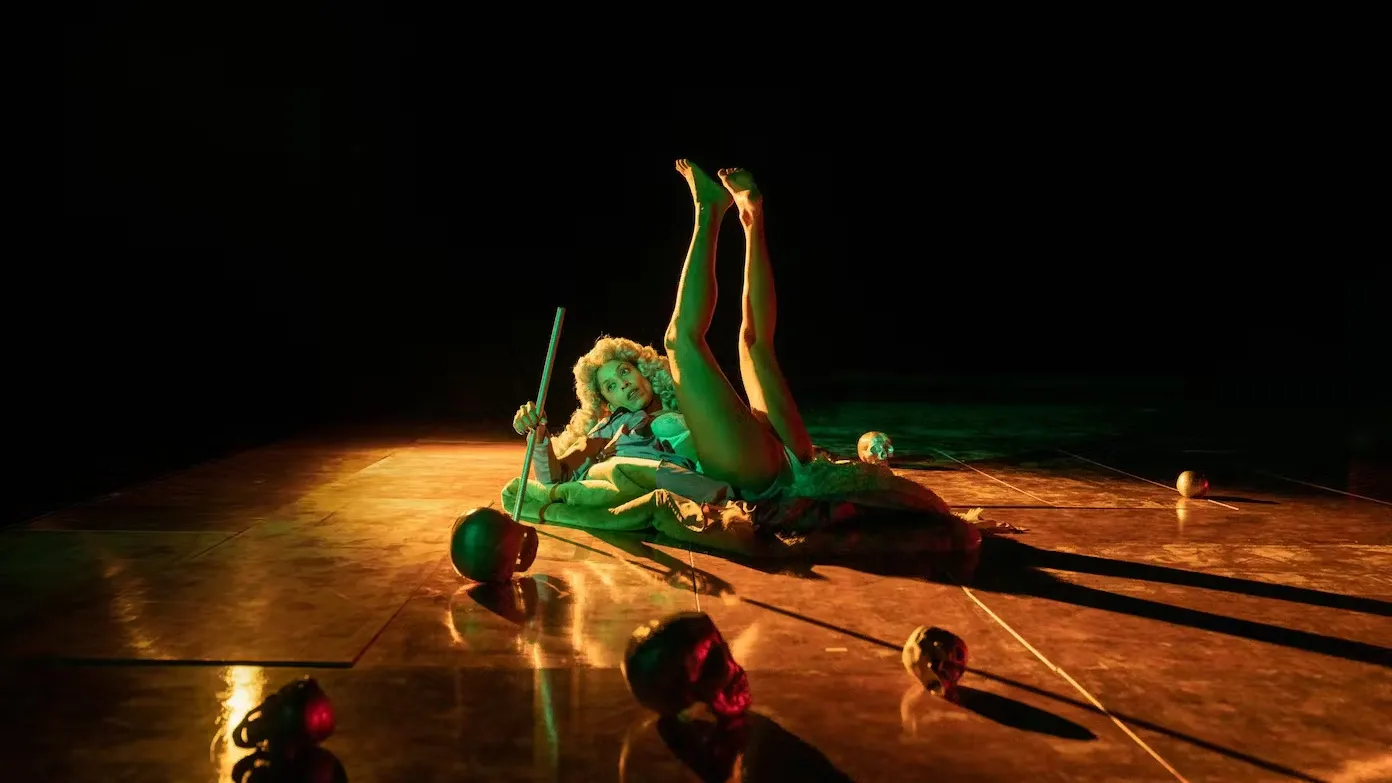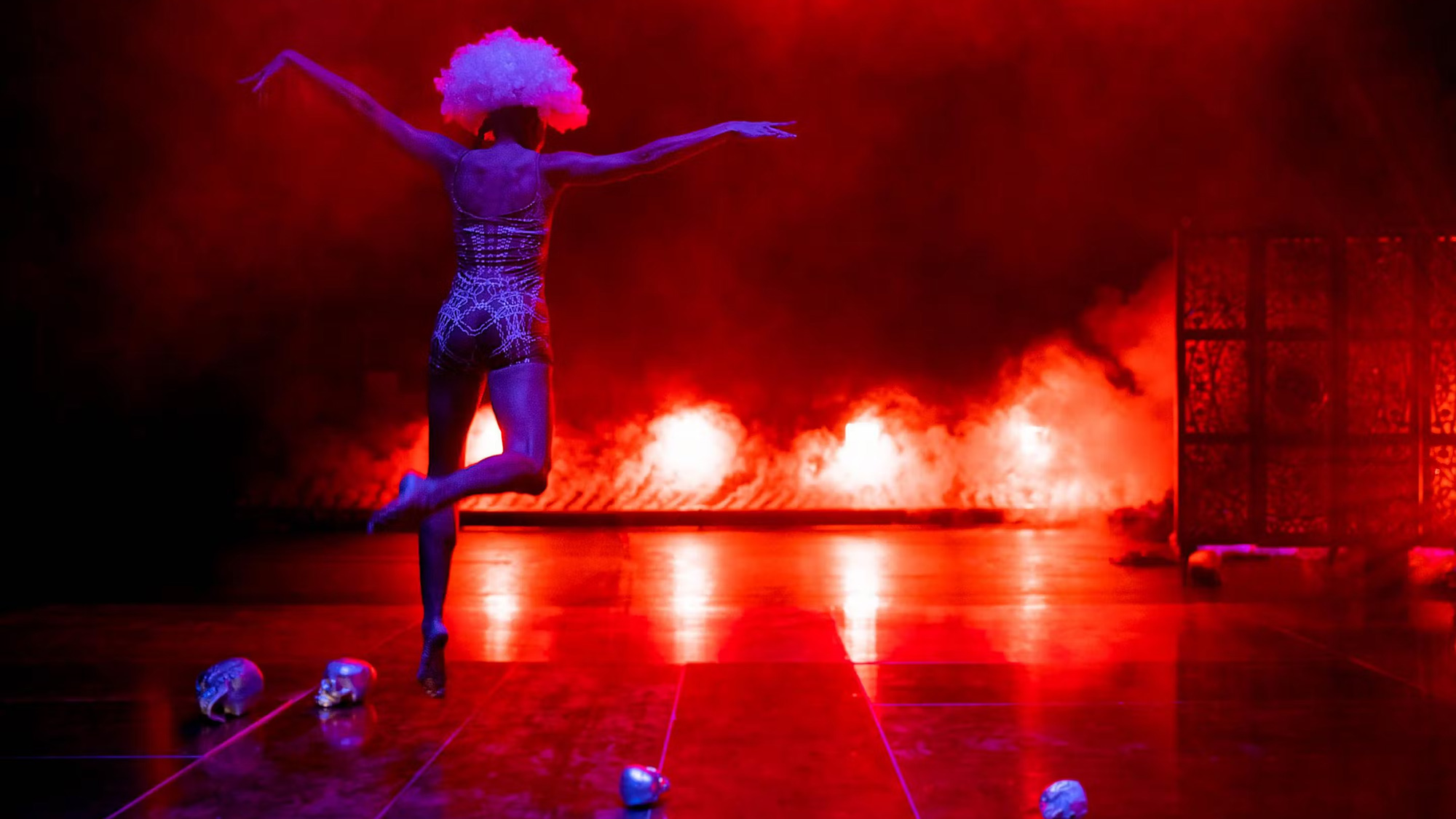
How Ligia Lewis Drew on Stories of Her Great-Grandmother in Her First Solo Exhibition
Ligia Lewis brings a visceral, theatrical physicality into her choreography as she engages with themes of race, class, trauma, and gender, often with darkly layered humor. The Berlin-based artist’s revolutionary spirit has recently moved from the stage and screen into the gallery. Her first solo exhibition, “study now steady,” has been running at The Center for Art, Research and Alliances in New York City since September 30 and continues through February 4. It features two commissions. A series of choreographic studies that shares the name of the exhibition acts as both a rehearsal and performance four days a week, manifesting scores used in Lewis’ previous works and playing with visitors’ sense of time via her dizzying loops and repetition. The gallery also screens Lewis’ newly commissioned film based on her stage work A Plot / A Scandal, which will be performed at the Walker Art Center in Minneapolis, January 11–13, and at EMPAC in Troy, New York, February 16–17.
What role does humor play in your work?
When you introduce humor, you offer a better understanding of the sheer tragedy of it. There’s something really cruel about dark humor. I use a Brechtian mode of: me seeing you seeing me. It’s a kind of process of estrangement and distanciation that’s happening with one’s own body and within relationship to others. It’s about the impossibility of coming together.
How does the idea of practice manifest in this new commission, study now steady?
I’m mobilizing studies that appear in my stage works. It never appears the same, but the work is always on a loop. The audience comes into what’s otherwise like a studio space, and they observe us going through these scores. There’s a kind of intimacy that can be enacted just by the sheer fact of proximity.
What have you discovered through that process of transforming your stage works into film?
You’re able to be more concrete. I rely so much on people imagining with me—to try to take them imaginatively through this space. Just by the sheer fact of being in another medium, people are more willing to enter into this fiction.
The installation “study now steady” draws on stories about your great-grandmother Lolón Zapata. Did you hear many of these stories growing up?
I didn’t hear enough about her, but she would appear occasionally. And my mother would make jokes with me, because my mother considers me to be the wild one of her four kids. And she would suggest that I was always a bit like Lolón. She would tell us fantastical stories about her running with a chicken’s head cut off in the village and cursing. She was a figure that my mother would refer to in reverence, but also in fear of a little bit because she did practice Dominican Palo, and she was performing these kinds of rituals at night with the community in the southern part of the Dominican Republic, which was an anti-Black government. In a way she was a kind of deviant. The way that my family talks about her still to this day—they love her and have tremendous respect for her, but they were also scared of her because they would watch her go into these really intense states as she was leaving these ceremonies. Out of respect for my great-grandmother, I don’t actually do Palo in the performance.
Is there a way you sort of have to protect it?
Oh, completely. It’s a religious practice. The whole thing is about the impossibility of performing Palo. My desire for rebellion, that’s what draws me to Lolón—her rebellious nature, the rebellion, of coming together and performing this communal dance at a time when it was not permitted.
Do you aim to create political change through your art form?
I don’t know how to not engage politically, even if it’s not in the most legible way. My work is deeply, deeply political. I just don’t know how to move otherwise.
